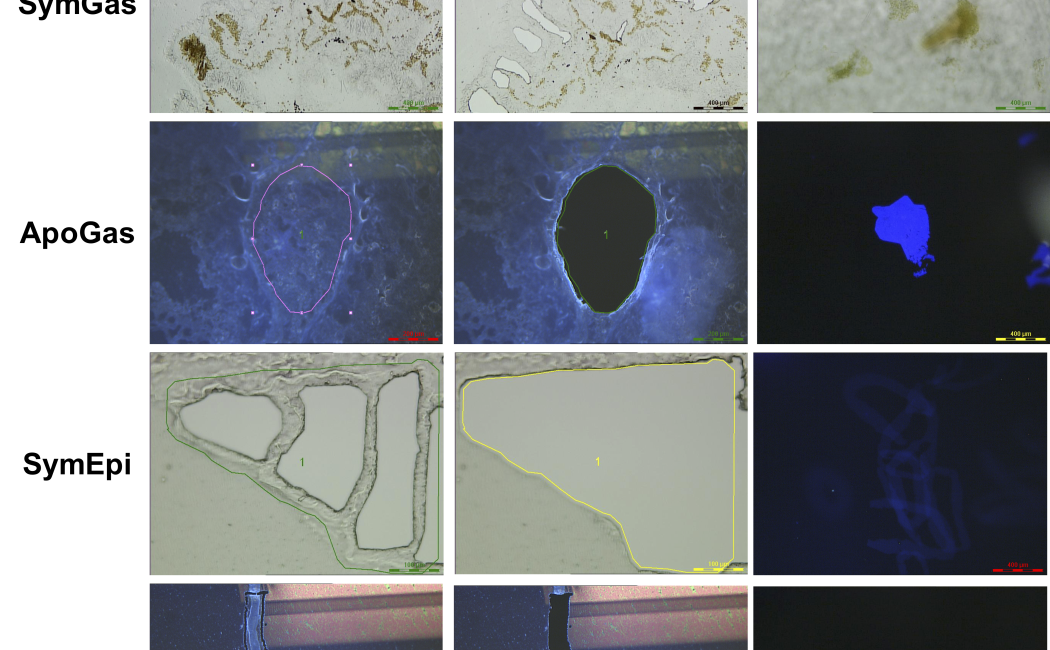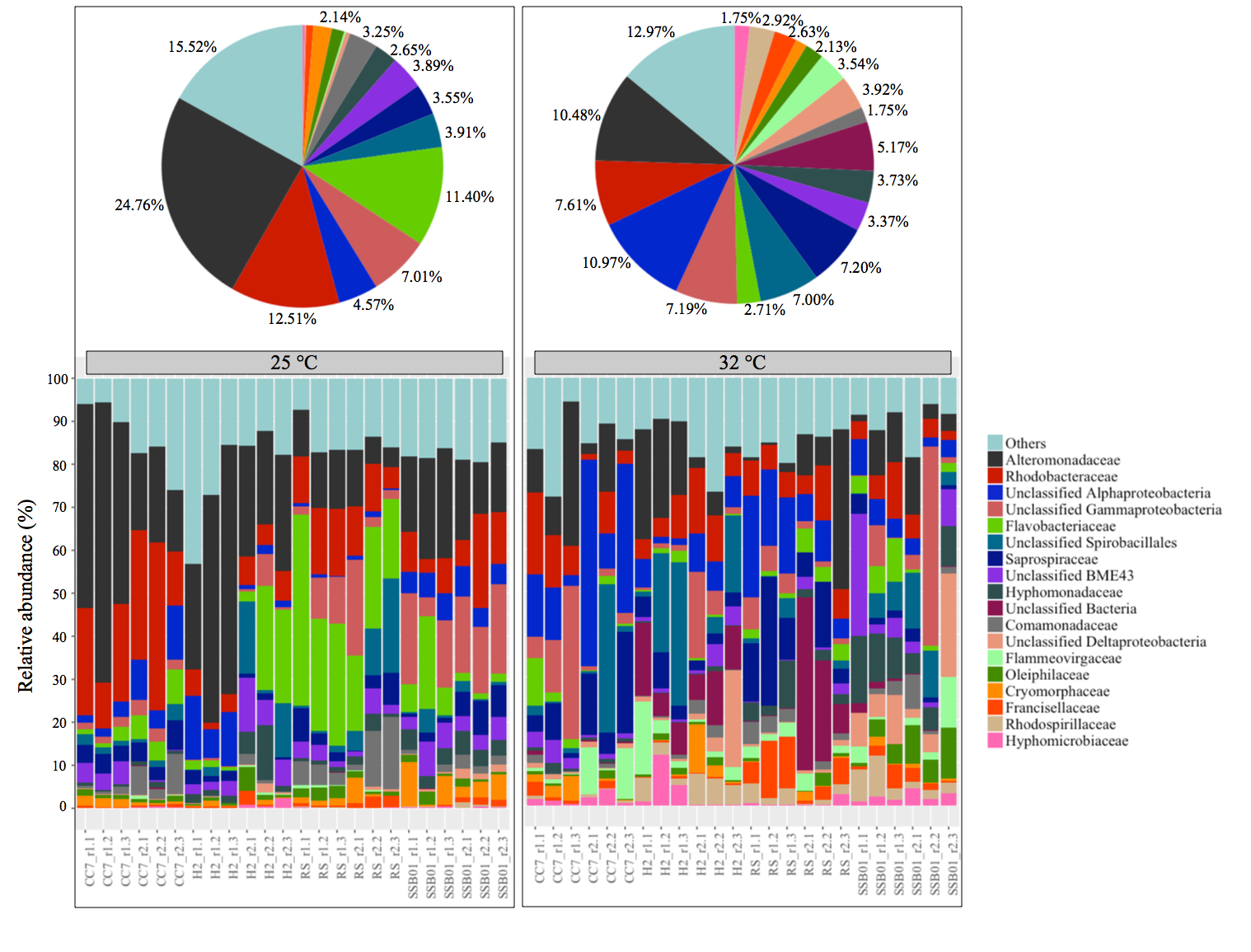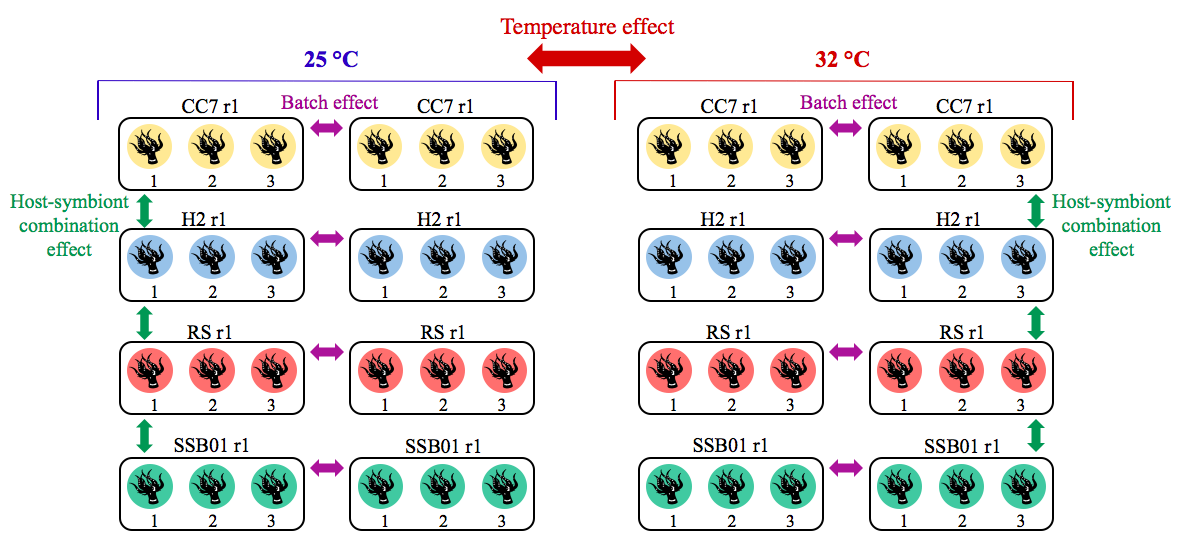
As this research topic is incredibly broad, it has spawned many sub-research topics.


The sequencing of the human genome was heralded as an unprecedented leap forward in the understanding of human biology; indeed, the decoding of our book of life has provided answers for many biological questions (e.g. association of specific mutations or genetic markers to common cancers) and clues for many others (e.g. the extent of epigenetic mechanisms in regulating expression).
Due to the myriad advantages offered by having full genome sequences of our organisms of interest, we sequenced and annotated the genome of Symbiodinium microadriaticum and one of the hosts it resides in, Stylophora pistillata. We identified the expansion of specific gene families in both organisms that contribute to (or, as a Darwinist would remark, a consequence of) their symbiotic lifestyles. We also compared the genomes of these organisms to previously published Symbiodinium and coral genomes--while our organisms share many similarities to what has been published in literature, there are many other differences as well.
In order to verify the function of genes of interest (e.g. candidate genes involved in establishing symbiosis) in Symbiodinium microadriaticum, we are attempting multiple approaches to transform Symbiodinium microadriaticum. We think that an optimised method of transforming Symbiodinium will open up molecular avenues to study dinoflagellate biology.
When subjected to prolonged environmental stress, Symbiodinium has been known to dissociate from its coral hosts, in a process known as coral bleaching. What sort of molecular signals are exchanged between host and symbiont that triggers this dissociation? Are these signals universal across a range of environmental stresses? We are in the process of analysing transcriptional data in order to form additional hypotheses for further verification in the lab.
Aranda lab: Manuel Aranda, Yong Li, Yi Jin Liew.
Other KAUST collaborators: Sebastian Baumgarten, Haitham Ashoor, Salim Bougouffa, Vladimir Bajic, Taewoo Ryu, Tim Ravasi, Christian Voolstra.
Other collaborators: Oleg Simakov, Michael Wilson, Joern Piel, Till Bayer, Gos Micklem, Hakmin Kim, Jong Bhak, Todd LaJeunesse.
Aranda lab: Manuel Aranda, Yong Li, Yi Jin Liew.
Other KAUST collaborators: Sebastian Baumgarten, Christian Voolstra.
Other collaborators: Jean-Francois Flot, Didier Zoccola, Sylvie Tambutte, Denis Allemand.
Aranda Lab: Jit Ern Chen, Guoxin Cui, Manuel Aranda.
Aranda Lab: Yi Jin Liew, Yong Li, Jit Ern Chen, Noura Zahran, Guoxin Cui, Xin Wang, Manuel Aranda.